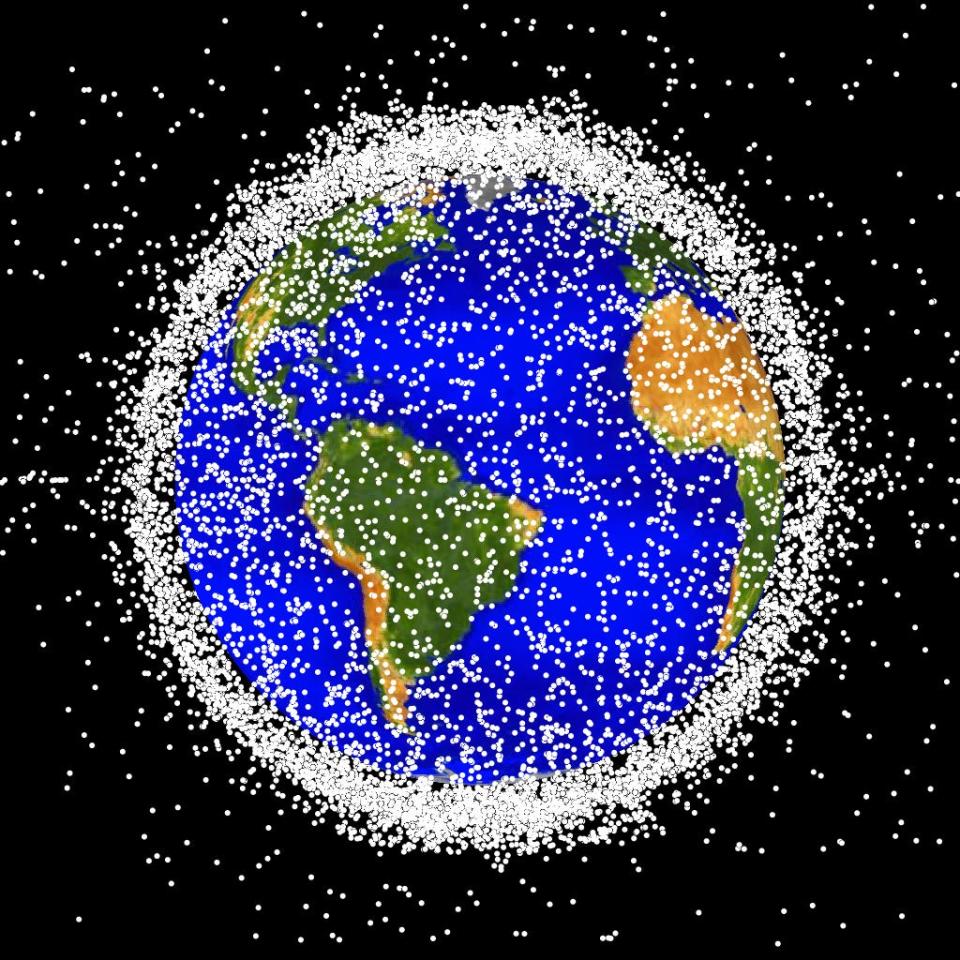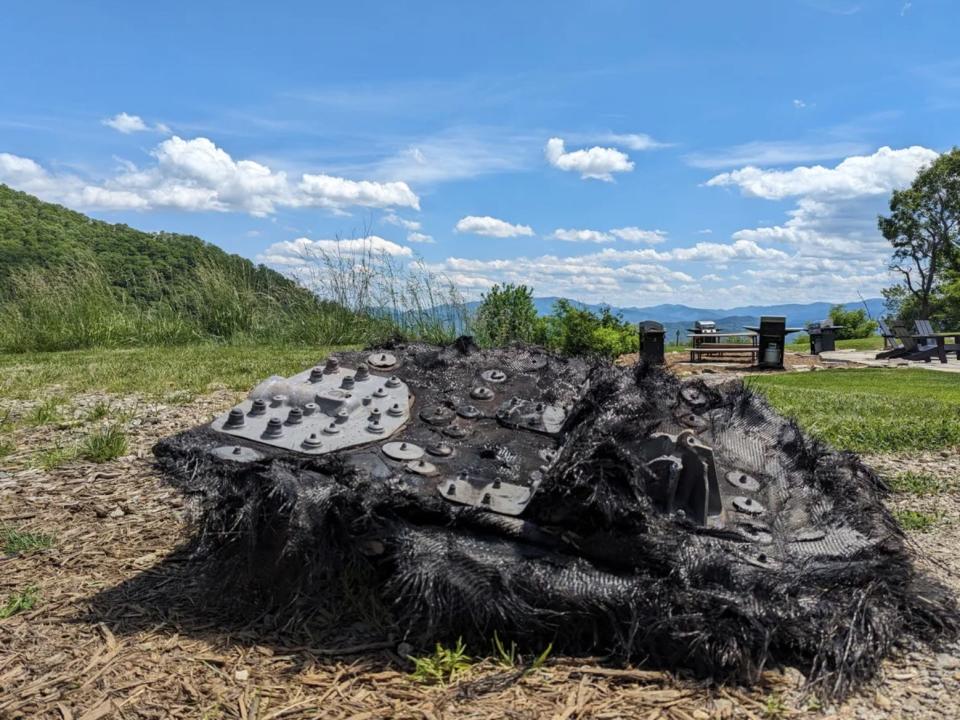SpaceX Dragon Capsule debris as big as a car hood crash-landed in North Carolina. It's part of a major space trash problem.
In May, a huge chunk of space debris crash landed in the mountains of North Carolina.
After reviewing the incident, NASA confirmed that it came from a SpaceX Dragon Capsule.
This, and other accidents, highlight how difficult it will be to reduce the risk of falling debris reaching Earth.
NASA has confirmed that a hunk of space junk as big as a car hood found in North Carolina belonged to a SpaceX Dragon Capsule, according to an agency statement shared on X.
The Dragon Capsule is a reusable spacecraft that carries astronauts and cargo to-and-from the International Space Station. But a part of it, called the trunk, isn't reusable and is discarded just before the capsule returns to Earth.
That trunk is what ended up crash-landing on a trail at a mountaintop resort just outside Asheville in May. "It was just wild. It was crazy-looking," groundskeeper Justin Clontz who stumbled on the large debris, told Space.com.
No one was injured from the impact. But the space junk shouldn't have been there in the first place. NASA said in its statement that evaluations of Dragon's initial design showed that it should fully break up in Earth's atmosphere. That's not what happens every time though.

A similar chunk of Dragon trunk was found in Franklin, North Carolina in June. And another landed in a farmer's field in Saskatchewan, Canada in April.
It's not just SpaceX junk falling to Earth. A two-pound piece of debris slightly smaller than a soda can fell from the International Space Station in March, crashing through a family's roof in Florida. The family is now suing NASA over the incident.
These series of recent accidents underscore how difficult it can be to predict and model when space debris will, and will not, burn up in Earth's atmosphere. Improving these models is more important than ever.
Humans are launching more into space than ever before

Space junk has been falling out of the sky since the 1960s, but humans are launching more stuff into space than ever before. According to the site "Our World in Data", in 2023, a record-breaking 2,664 objects, including satellites, spacecraft, landers, and more, were sent to, or beyond, Earth's orbit.
"Once those things die, then they're just abandoned. It's just like orbiting trash. And then it's up to mother nature to figure out how the thing re-enters," Moriba Jah, associate professor of Aerospace Engineering and Engineering Mechanics at The University of Texas at Austin, told BI.
Jah is referring to uncontrolled re-entries. It's when space debris free-falls toward Earth with no one controlling its course.
Modeling uncontrolled re-entires involves a lot of uncertainty and is, therefore, more complex than modeling controlled re-entries, which usually involve rockets that guide the debris' trajectory, ensuring it lands in a safe area, like the ocean.

"For uncontrolled stuff, all bets are off, because you don't necessarily know what the orientation of the object is as it hits the atmosphere, or how it's tumbling," said Jah, who partners with ServicePlan Innovation on Space Trash Signs to study and visualize the consequences of space pollution.
Uncontrolled re-entry typically happens to smaller chunks of space debris that are expected to break up in the atmosphere before ever reaching the ground — like the Dragon Capsule's trunk.
Even though this space debris is relatively small compared to, say, car-sized satellites, it's not harmless. They're moving at thousands of miles per hour before impact.
If the piece of debris that crash landed outside Asheville, North Carolina in May had landed on a person, it would have certainly killed them, Jonathan McDowell, an astrophysicist at the Harvard and Smithsonian Center for Astrophysics and leading space debris expert, told BI.

While the chances of space debris hitting a person are astronomically low, a 2022 study published in the peer-reviewed journal Nature, estimated there's about a 10% chance one or more people will be struck within a 10-year period.
How to reduce the risk of falling space debris
NASA wrote in its statement that it'll use the debris recovered from the mountaintop resort in North Carolina to improve debris modeling.
Another option that NASA should consider, McDowell said, was to reduce the number of uncontrolled re-entries and use controlled de-orbit even for small space objects.
"Then you know exactly when and where it's gonna come down," McDowell said.
Right now, controlled re-entries are relatively uncommon. Roughly 200 to 400 objects big enough to be tracked re-enter Earth's atmosphere each year, and only a handful of them are controlled re-entries, according to The Aerospace Corporation.
Making controlled re-entry the status quo would require new laws, and federal funding to help NASA and companies like SpaceX clean up their junk, Jah said.
The Federal Government is responsible for approving space launches but doesn't hold launching entities like NASA or SpaceX responsible for disposing of objects safely. That needs to change, Jah added.
"Working in space always carries some uncertainty, but NASA works to ensure its operations are safe for the public, and it strives to continuously improve processes," NASA wrote in a statement to BI.
SpaceX did not respond to BI's request for comment.
Read the original article on Business Insider


